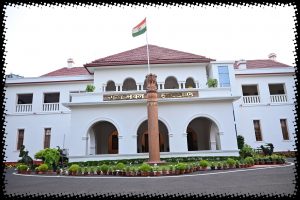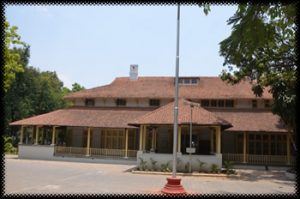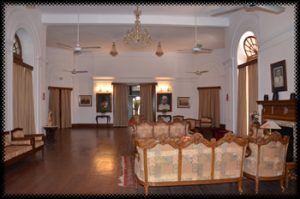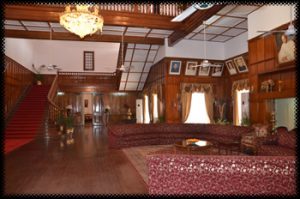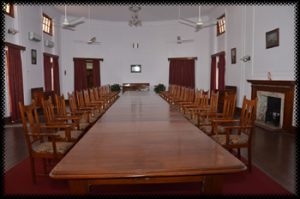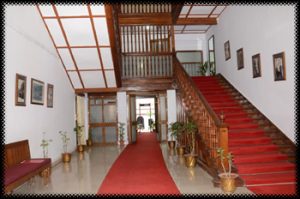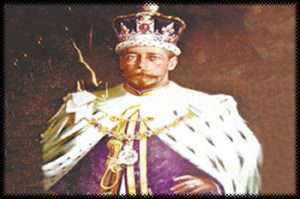ANTIQUES
Priceless objects and architecture form a part of the rare artistic collections of paintings and sculptures at the Raj Bhavan. They date back to periods of various historical kingdoms, including the British period, and are aide memoire of art forms and styles prevalent during the time. Magnificent paintings tell the tales of the political and socio cultural stories of the period.
The dining table, chairs, crockery cupboard, bureau, a number of crockery and cutlery pieces, wine flutes and goblets, coffee brewer, very big metal utensils, beds, dressing tables, jacket and hat hangers, food – warmer cupboard, statues, ceramic pots, metallic lamp shades, kerosene operated fans and refrigerators, and manual siren – these are some of the antiques belonging to the British time that have been well preserved till date.
Successive Governors of Raj Bhavan have made an effort to build an aesthetic collection of master pieces of art and artefacts representing the historical legacy.
